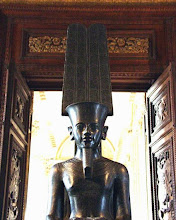Saturn's Mysterious G-ring Explained
This image of Saturn's G ring captures its single bright arc on the ring's inner edge. Credit: Cassini Imaging Team and NASA/JPL/SSI A loosely knit band of roving ice boulders in orbit around Saturn could be providing the raw material for one of the planet's rings, scientists say.
A loosely knit band of roving ice boulders in orbit around Saturn could be providing the raw material for one of the planet's rings, scientists say.
The finding, detailed in the Aug. 3 issue of the journal Science, could solve the puzzle of what sustains Saturn's "G-ring" and might be evidence that a Saturnian moonlet was destroyed during an ancient collision.
The formation of Saturn's rings is a general mystery, but theorists figure they're the result of one or more breakups of icy objects in the past. In particular though, the G-ring has really puzzled scientists since its discovery in the late 1970s by the Voyager mission.
The odd ring
The G-ring is a faint and narrow circlet of debris located beyond Saturn's main set of rings. There is no obvious way it could have formed. Material for Saturn's E-ring is supplied by debris shed from the moon Enceladus, and the planet's F-ring is created by the shepherding actions of the moons Prometheus and Pandora, which act like snowplows to clear lanes on either side of the ring.
But Mimas, the G-ring's closest Saturnian moon, is located a relatively far 9,300 miles (15,000 kilometers) away from the ring.
In September 2006, NASA's Cassini spacecraft provided scientists with one of their best glimpses of the G-ring. Images revealed a bright, curved streak of material near the ring's inner edge composed of icy particles ranging in size from less than a centimeter to a meter in diameter.
"You don't normally expect in a ring system to see something confined to a range of latitudes around Saturn," said study team member Matthew Hedman of Cornell University in New York. "By definition, things should smear out and become a continuous ring all the way around the planet."
Scientists estimate the arc is about 155 miles (250 kilometers) wide and about 100,000 miles (170,000 kilometers) long, or about one-sixth the circumference of the G-ring. If all the material in the arc were gathered into a single body, it would form an icy moonlet more than 300 feet (100 meters) across.
And like a moon, the bright arc circles around Saturn, taking about 19 hours to make one complete orbit. It moves in a nearly synchronous orbit with Mimas, going around seven times for every six orbits that Mimas makes.
Orbital resonance
Despite Mimas's distant location from the G-ring, scientists think the moon's gravity helps herd in the larger pieces of debris in the arc, keeping them in a crescent shape as they go around Saturn.
Occasionally, these large chunks of ice smash into one another, releasing clouds of dust and fine ice crystals into space. The researchers speculate that the shed material gets bumped around by highly charged particles and electrons, called plasma, in Saturn's magnetosphere and eventually drift out of the confines of the arc to settle into a ring.
"The big [arc] particles only feel gravity, so they don't spread very much. They're all trapped in the arc," Hedman told SPACE.com. "But the little dust grains can interact with the plasma in Saturn's magnetosphere. Since they're smaller, they can feel those forces and [the interaction] can cause material to spread radially."
The origin of the arc's bigger particles is still a mystery. One idea is that they are remnants of a small satellite destroyed long ago through a collision with another object. "One possibility is that it was a moonlet that was broken up," Hedman said. "The trick is that it has to get into this configuration with Mimas, and we're still trying to understand how that could've happened in the first place."
VIDEO: The Source of Saturn's G-ring






